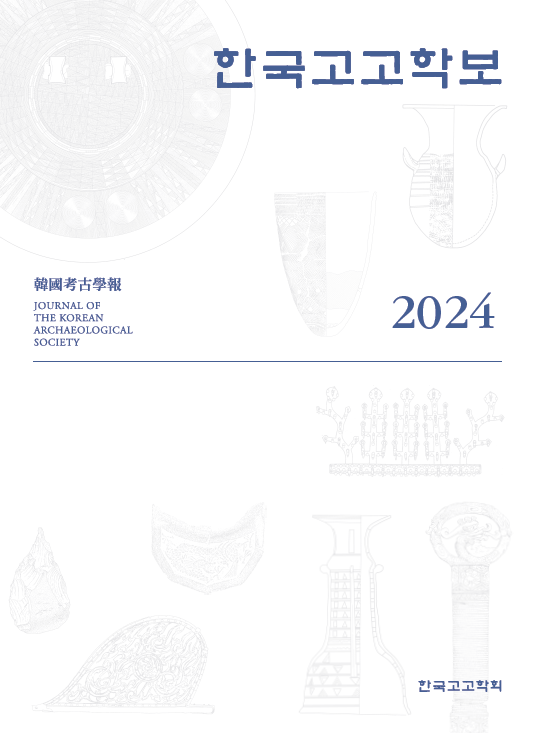김해 구산동 묘역지석묘는 정치적 목적을 실현하기 위해 축조된 거석기념물이었다. 이것은 새로운 경관의 창출이었으며, 사회적 기능과 상징적 의미가 부가된 장소만들기의 결과물이었다. 이러한 장소만들기에는 당시의 물리적 환경과 지역민의 활동, 상징적 측면을 다각적으로 고려한 공간구현 전략들이 구사되었다. 첫째, 지석묘 축조 공간의 특성을 극적으로 부각시켜 중심이미지를 형성하는 전략을 구사하였다. 구산동 묘역지석묘는 김해분지 전역의 이동을 통제하는 통로에 있었고, 지역의 구심점 역할과 영향력을 행사할 수 있는 결절을 점하고 있었다. 또한 해반천과 습지에 의해 나누어진 물리적·심리적 경계를 연결하고, 재지와 외래문화를 통합하는 공간적 위상을 지니고 있었다. 무엇보다도, 지석묘는 가시성과 상징성을 대표하는 랜드마크로서 지역사회의 중심이미지를 형성하며 특별한 의미를 지닌 장소로 작용하고 있었다. 두 번째 장소만들기 전략은 지석묘에 대한 반복적인 체험을 유발하는 공간시퀀스와 활동 공간의 조성이었다. 구산동 묘역지석묘는 김해분지의 동선 축이 교차하는 지점에 축조되었는데, 이는 역동적인 신체 체험을 유도하는 순환구조를 형성하였다. 또한 묘역 시설은 구조물의 형태, 높이차, 재료의 변화를 통해 분절을 형성하며 강한 시각적 체험을 유발하는 효과를 지니고 있었다. 지석묘의 가시권도 동선 축을 따라 이동하는 지역민들에게 연속적인 시각 체험을 유도하고 있었다. 한편 대규모 묘역은 반복적인 의례 행위 공간으로 활용되었을 가능성이 크며, 이는 지석묘의 장소성 형성에 영향을 미쳤을 것으로 보인다. 세 번째 전략은 역사성을 암시하는 상징적 장소의 구현이었다. 당시 김해분지에서는 대성동 294번지에서 보는 것과 같이 묘역지석묘를 채택하며 정치적으로 의미화된 장소를 조영하고 있었다. 이러한 전통 묘제를 확대·재현한 것이 구산동 묘역지석묘였다. 이것은 국지적 차원의 상징 경관을 김해분지라는 지역적 차원으로 전환한 것이었으며, 전통질서의 공간적 확대와 가시화를 통해 묘역지석묘의 상징성을 강조하고자 하였던 정치적 행위였다.
The dolmen with surrounding stone platform of Gusan-dong, Gimhae, was a megalithic monument built to realize political purposes. This was the creation of a new landscape and the result of creating a kind of place with added social function and symbolic mean-ing. In making such a place, spatial implementation strategies that considered the physical environment of the time, the activities of local residents, and symbolic aspects were used. First, a strategy was used to form a central image by dramatically highlighting the characteristics of the construction space of the dolmen. The dolmen with surrounding stone platform in Gusan-dong was in a path that controlled movement throughout the Gimhae Basin, and occupied a node that could exert influence and play a role as a central point of the region. In addition, it had a spatial status that connected the physical and psychological boundaries divided by the Haebancheon River and wetlands, and integrated the location and foreign culture. Above all, the dolmen was a landmark representing visibility and sym-bolism, forming the central image of the local community and acting as a place with a spe-cial meaning. The second place-making strategy was the creation of space sequences and activity spaces that induced the repetitive experiences of the dolmen. The dolmen was built at the intersection of the axis of the Gimhae Basin, which formed a circular structure that induced a dynamic physical experience. In addition, the platform of the dolmen formed a segment through changes in the shape, height difference, and material of the structure and had the effect of inducing a strong visual experience. The visibility of the dolmen also induced con-tinuous visual experiences to local residents moving along the axis. On the other hand, it is highly likely that the platform was used as a space for repetitive ritual activities, and this seems to have influenced the formation of the placeness of the dolmen. The third strategy was the realization of a symbolic place that implies historicality. At that time, the Gimhae Basin was creating a politically meaningful place by adopting the dolmens with surrounding stone platforms as seen at 294 Daeseong-dong. It was the Gu-san-dong dolmen that expanded and reproduced these traditional tombs. This was a politi-cal act emphasizing the symbolism of the dolmen through the spatial expansion and visual-ization of the traditional order, and the symbolic landscape at the local level was converted to the regional level of the Gimhae Basin.
Ⅰ. 머리말
Ⅱ. 장소, 장소성, 장소만들기
Ⅲ. 구산동 묘역지석묘의 축조 배경
Ⅳ. 구산동 묘역지석묘의 공간구현 전략
Ⅴ. 맺음말
(0)
(0)
